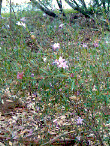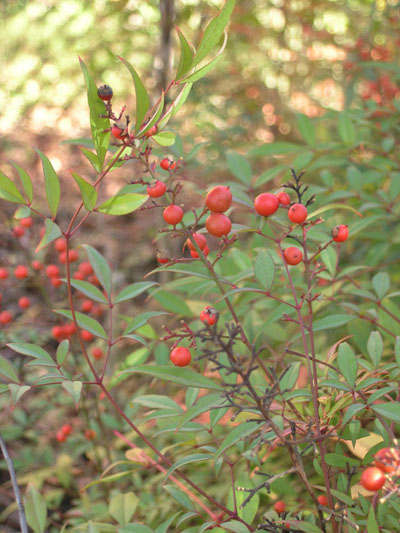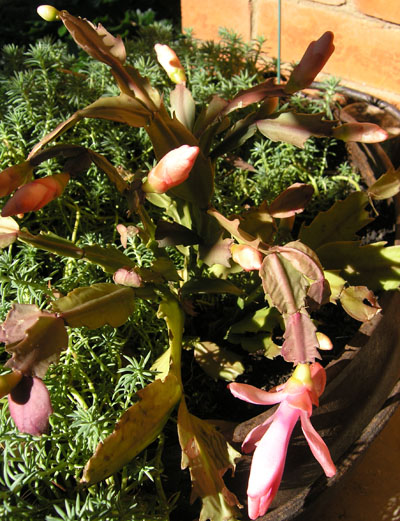Simon posted earlier about the native plants we've planted in our garden and I've taken photos of those we purchased from the Aust Natl. Botanic garden plant sales. These are listed below with links to their botanical information, courtesy of the Botanic Gardens web page, a highly useful and accessible resource!
Grevilleas
So far we have three Grevilleas, Grevillea Langiera, Grevillea 'Bedspread' (a wilkinsonii hybrid bought from the Yarralumla Native Plant Nursery) and Grevillea Victoriae (subsp. Nivalis, 'Murray Queen').
 Grevillea Langiera (red-cream flowers)
Grevillea Langiera (red-cream flowers)
 Grevillea 'Bedspread' (a wilkinsonii hybrid) (burgundy 'toothbrush'-like flowers)
Grevillea 'Bedspread' (a wilkinsonii hybrid) (burgundy 'toothbrush'-like flowers)
 Grevillea Victoriae (golden flowers)
Grevillea Victoriae (golden flowers)
Native grasses
There are some existing native grasses in our garden and to these we added a flax lily (Dianella Revoluta), Libertia Paniculata and Enneapogon Nigricans.
 Dianella Revoluta (flax lily with blue berries)
Dianella Revoluta (flax lily with blue berries)
 Libertia Paniculata (creamy flowers)
Libertia Paniculata (creamy flowers)
 Enneapogon Nigricans (dark narrow flower spikes that turn to fluffy seeds)
Enneapogon Nigricans (dark narrow flower spikes that turn to fluffy seeds)
Ground covers
We've got some other ground covers too, the Viola Hederacea (Native Violet), Scaevola Albida, and an Eustrephus Latifolius (Wombat berry), which looks a little like the well-established Hardenbergia we have growing.
 Viola Hederacea (Native Violet)
Viola Hederacea (Native Violet)
 Scaevola Albida (pink flowers)
Scaevola Albida (pink flowers)
 Eustrephus Latifolius (a 'Wombat berry', with yellow berries)
Eustrephus Latifolius (a 'Wombat berry', with yellow berries)
Other native shrubs
There's a couple of native shrubs that look much like the bottlebrush, but we've yet to clarify exactly what they are. To o our collection, we have added a Callistemon 'Summer Days' (Nyallingensis 'Nowa Nowa'), a Banksia Marginata, a Melaleuca Squarrosa and a (somewhat struggling) Myoporum Insulare.
 Callistemon 'Summer Days' (classic red brushes)
Callistemon 'Summer Days' (classic red brushes)
 Banksia Marginata (large golden flower cones)
Banksia Marginata (large golden flower cones)
 Melaleuca Squarrosa (creamy flower clusters, similar to a bottle brush but looser)
Melaleuca Squarrosa (creamy flower clusters, similar to a bottle brush but looser)
 Myoporum Insulare
Myoporum Insulare
Kangaroo paws
We have planted a couple of varieties of kangaroo paw too; Anigozanthos 'Orange Cross' and Anigozanthos 'Bush Dawn', plus some small seedlings which aren't yet identified. We've never really had much luck with getting kangaroo paws established, but the ones we've planted are doing OK for the moment. I'm not certain they'll cope over winter with the frosts, but we'll just have to see I guess!
 Anigozanthos 'Orange Cross' (possibly Flavidus variation or Flavidus-Preissii hybrid) (vivid orange flowers)
Anigozanthos 'Orange Cross' (possibly Flavidus variation or Flavidus-Preissii hybrid) (vivid orange flowers)
 Anigozanthos 'Bush Dawn' (possibly a hybrid from Pulcherrimus?) (yellow-lime coloured flowers)
Anigozanthos 'Bush Dawn' (possibly a hybrid from Pulcherrimus?) (yellow-lime coloured flowers)
 Seedlings
Seedlings
Here's a couple we haven't quite identified yet (we lost the labels to some!)... Can you help us out?
 What is it? (pink flowers almost like a Geraldton wax, but pointier; leaves that a slightly grey-green, small and pointed)
What is it? (pink flowers almost like a Geraldton wax, but pointier; leaves that a slightly grey-green, small and pointed)
 What is it? (looks like a coastal paperbark; silver trunk; very small leaves that seem horizontal and flat; new growth on tips is lime green!)
What is it? (looks like a coastal paperbark; silver trunk; very small leaves that seem horizontal and flat; new growth on tips is lime green!)
 What is it? (soft green foliage that arches; thin leaves)
What is it? (soft green foliage that arches; thin leaves)
Planting our natives
What did we do to get our natives into the ground? Well, Simon did the hard work of breaking into the clay!
- We were advised to make the planting hole quite wide (at least 50cms), given the clay soil, so that the roots could spread as well as grow deeper (depending on the plant itself).
- We didn't over-do the composting, just some friable, loose mulchy-type compost that we knew wasn't too rich (natives don't like too much nitrogen).
- Then set the plant in place, staked those that seemed to need it, then covered and didn't pack the soil too tightly.
- Watered and then kept the soil slightly moist (checking by digging our hands into the soil around the tree). It's good to not water too close to the trunk, to avoid the plant getting soggy roots (especially as the clay soils in Canberra hold the moist for longer!).
So, growing natives is not a difficult as it may seem and there's plenty of information around to give you a head-start. Gardening Australia has plenty of stories and fact sheets about growing natives, from potting and hedging natives, to propagation and managing trees.
technorati tags:native_plants, planting_natives, Canberra_natives, ANBG, botanic_gardens, Gardening_Australia
Blogged with Flock





















 What is it? (pink flowers almost like a
What is it? (pink flowers almost like a  What is it? (looks like a coastal
What is it? (looks like a coastal  What is it? (soft green foliage that arches; thin leaves)
What is it? (soft green foliage that arches; thin leaves)


